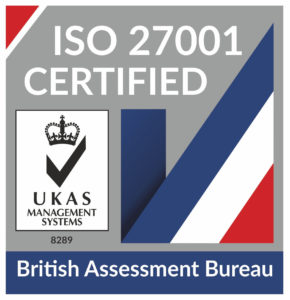
HaloITSM Guides
Documentation to assist with the setup and configuration of the HaloITSM platform
Azure OpenAI and OpenAI Integrations (Improve Agent Responses)
As of 2.146.1 Halo has an AI Module on the main configuration page, if you are on a version prior to this, you must setup the integration through the Azure OpenAI or OpenAI/ ChatGPT modules found in Configuration > Integrations (Make sure to enable the module you require). From here you can select your connection type: none, Halo's default Azure OpenAI connection (when it becomes available), your own Azure OpenAI connection, or your own OpenAI connection. For the latter 2, you will have to provide your credentials, whereas the option to use Halo's connection will be available for all hosted customers and will not require your credentials (when it becomes available). There is now the ability to use the Azure OpenAI and OpenAI connections at the same time for different AI features.
The option chosen from the AI module determines which AI Integration module is turned on i.e. if I choose Own Azure OpenAI connection type then the Azure OpenAI module will be enabled, if I choose Own OpenAI connection type then the OpenAI/ChatGPT module will be enabled. To connect to the ChatGPT version, you will only need to input the API key:
NB: By selecting the option to use Halo's Azure OpenAI connection (When this eventually becomes available) you consent to sending your data to our Azure OpenAI to be consumed.
First make sure to enable the AI module from the main configuration page by clicking on the "+" sign:
The Azure Open AI module configured with your own Azure AI application, can now be used to connect to the runboooks associated to it and when configuring the "email user" action (Configuration > Tickets > Actions) you can add the model associated to your OpenAI, which can be configured to accomodate the AI responses when a user emails the service desk(Improve the agents message or it can be set to generate a response to the user based on the content of the user email):
make sure that you have the correct email defaults turned on so that previewing/ editing the email from the preview screen is possible (Found in Configuration > Email):
To create an email user action seperate from the default, you can clone the original action by using the top bar option "Clone" (Shown in the "Email User" image above) which allows you to recreate the same action with the same configuration but a different name. The OpenAI prompt text box is used to give the AI a prompt for how to i.e. improve the agent note. If you check on the "Improve Agent Note is on by default" setting, this will mean an "A" icon appears as a button on the rich text fields header. If you have "Show email preview after an email action" enabled, the AI will execute the prompt and update the agents note based on that prompt when you preview the email (When you click send, the preview will contain the Improved note generated by OpenAI):
The improved note generated by OpenAI:
Configuring your own Azure OpenAI Models
It is important to make sure your Azure tenant is setup to support the Azure AI area, it can be disabled. If this is the case, please contact Microsoft to get Azure AI enabled for your tenant. There are multiple models which you can deploy in the Azure AI area, so the possibilites are extensive when configuring your own models (AI Models).
The video below is by Mendy Green (One of our PSA Partners) from Rising Tide Consulting, he covers how to setup the Azure AI application on Microsoft Entra (Azure).
To configure the Azure OpenAI Integration, you must go to the Azure AI portal on Microsoft Entra and then "Azure AI Services". Many of the regions do not support GPT-4 (Supported Regions: Australia East, Canada East, East US, East US 2, France Central, Japan East, Sweden Central, Switzerland North, UK South) this list may be subject to change, so please do check based on the models you configure.
You have the option to configure network restrictions. The Keys and Endpoints tab is where you get the API Key and the Endpoint, which you input in Halo (Configuration > AI):
The API Version input on halo must correspond to the version associated to the model that has been deployed, or else the integration will not work. Examples of models that can be deployed:
- GPT-4
- GPT-3.5
- Ada
There will be an arbitrary name given to the model which is deployed in Azure, this is what you will input to the field "Default Azure OpenAI Deployment" on the AI module. To create a model in Azure, you can click on a "Deployments" tab which will then prompt you to create a model. You can configure a different model for the Embeddings.
Popular Guides
- Asset Import - CSV/XLS/Spreadsheet Method
- Call Management in Halo
- Creating a New Application for API Connections
- Creating Agents and Editing Agent Details
- Departments and Teams
- Halo Integrator
- Importing Data
- Multiple New Portals with different branding for one customer [Hosted]
- NHServer Deprecation User Guide
- Organisation Basics
- Organising Teams of Agents
- Step-by-Step Configuration Walk Through
- Suppliers



